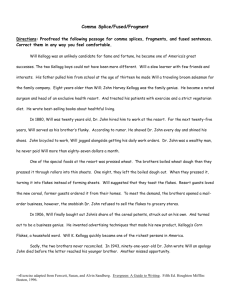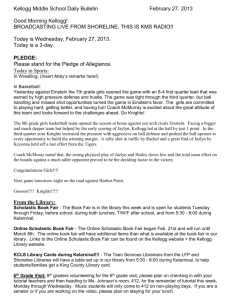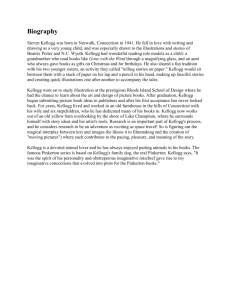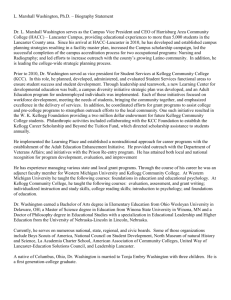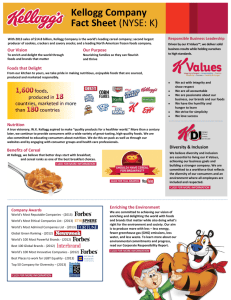International Marketing Strategy - Case Study
advertisement
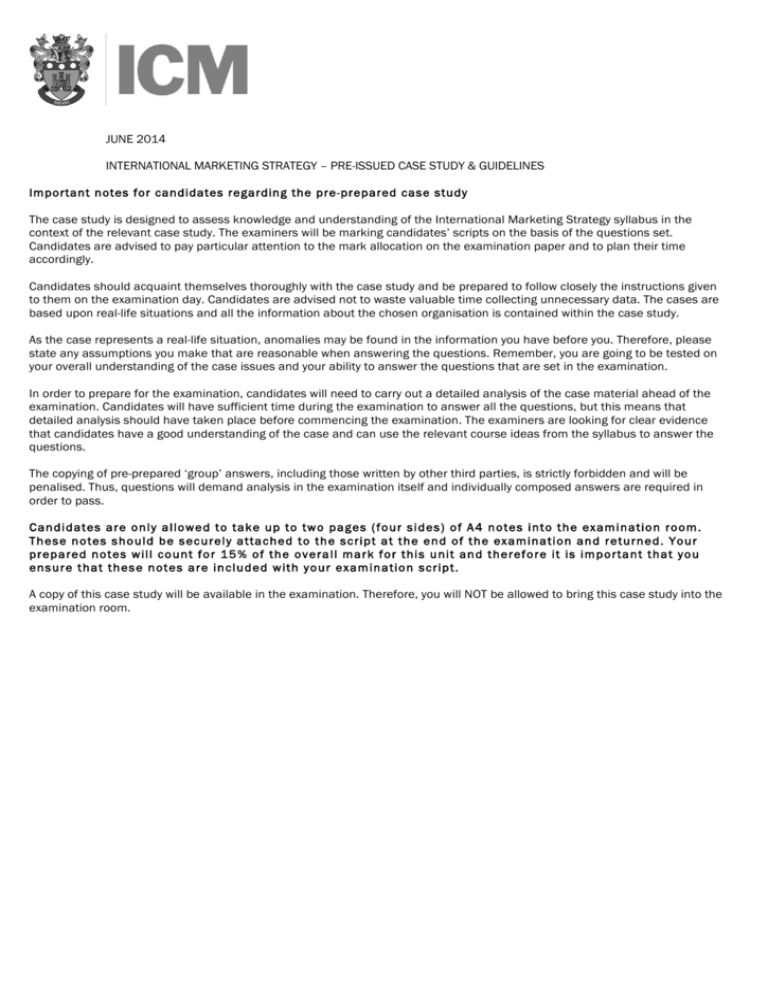
JUNE 2014 INTERNATIONAL MARKETING STRATEGY – PRE-ISSUED CASE STUDY & GUIDELINES Important notes for candidates regarding the pre-prepared case study The case study is designed to assess knowledge and understanding of the International Marketing Strategy syllabus in the context of the relevant case study. The examiners will be marking candidates’ scripts on the basis of the questions set. Candidates are advised to pay particular attention to the mark allocation on the examination paper and to plan their time accordingly. Candidates should acquaint themselves thoroughly with the case study and be prepared to follow closely the instructions given to them on the examination day. Candidates are advised not to waste valuable time collecting unnecessary data. The cases are based upon real-life situations and all the information about the chosen organisation is contained within the case study. As the case represents a real-life situation, anomalies may be found in the information you have before you. Therefore, please state any assumptions you make that are reasonable when answering the questions. Remember, you are going to be tested on your overall understanding of the case issues and your ability to answer the questions that are set in the examination. In order to prepare for the examination, candidates will need to carry out a detailed analysis of the case material ahead of the examination. Candidates will have sufficient time during the examination to answer all the questions, but this means that detailed analysis should have taken place before commencing the examination. The examiners are looking for clear evidence that candidates have a good understanding of the case and can use the relevant course ideas from the syllabus to answer the questions. The copying of pre-prepared ‘group’ answers, including those written by other third parties, is strictly forbidden and will be penalised. Thus, questions will demand analysis in the examination itself and individually composed answers are required in order to pass. Candidates are only allowed to take up to two pages (four sides) of A4 notes into the examination room. These notes should be securely attached to the script at the end of the examination and returned. Your prepared notes will count for 15% of the overall mark for this unit and therefore it is important that you ensure that these notes are included with your examination script. A copy of this case study will be available in the examination. Therefore, you will NOT be allowed to bring this case study into the examination room. JUNE 2014 INTERNATIONAL MARKETING STRATEGY CASE STUDY – KELLOGG’S Kellogg’s was founded as the Battle Creek Toasted Corn Flake Company on February 19, 1906, by Will Keith Kellogg and his brother, John Harvey Kellogg in Battle Creek, Michigan, United States. The company produced and marketed the hugely successful Kellogg’s Toasted Corn Flakes and was renamed the Kellogg Company in 1922. From 1969 to 1977, Kellogg’s acquired various small businesses including Salad Foods, Fearn International, Mrs. Smith’s Pies, Eggo and Pure Packed Foods and emerged as the market leaders in the ready-to-eat segment in the US and additionally, its products were being sold in more than 180 countries around the world. Kellogg’s became a name to reckon with throughout the world. Kellogg’s was in fact known as the company that introduced the concept of corn flakes as a breakfast throughout the world. It even introduced its products into markets where corn flakes had never been popular for breakfast and converted them into a corn flake eating nation over a long period of time. Kellogg’s had proven that with the right kind of marketing strategies and approach, markets could be tamed and moulded the way corporations wanted. In the late 80’s, Kellogg’s was riding on this success and was commanding a staggering 40 per cent of the US ready-to-eat market from its cereal products alone, with annual sales of $6 billion and 20 production plants in 18 countries. The success story of Kellogg’s, however, was not to last, as by the early 90’s brand Kellogg’s began to struggle as its competition, General Mills, increased the pressure with its Cheerios brand. The other factor which was spoiling the game for Kellogg’s was the fact that in its core markets, such as the United States and the UK, the cereal industry had been stagnant for over a decade, with no room for further growth. Kellogg’s started searching for new markets beyond its traditional markets in Europe and the United States in search of more cereal eating consumers. It eventually focused on India as it was offering over 950 million inhabitants, 250 million of whom were middle class, and was a completely untapped market. With the aim to replicate its success story in India, Kellogg’s entered the Indian market in 1994; three years after the barriers to international trade had opened in India. Kellogg’s decided to invest $65 million and launched its number one brand, Corn Flakes. The entry of Kellogg’s was seen as a major milestone by Indian economic experts. The mantra was that even if Kellogg’s has only a two percent market share, at 18 million consumers they would have a larger market than in the US itself. However, the Indian sub-continent found the whole concept of eating breakfast cereal a new one as consumers in India preferred to start the day with a daily bread called chapatti or its equivalent. For Kellogg’s it meant not only few direct competitors, but also that the company needed to promote not only its product, but also the very idea of eating breakfast cereal instead of the regular diet, which they had previously been successful at. The initial sales figures did agree with the concept and it simply indicated that the cereal consumption was on the rise, which was encouraging for the company. However, it was soon revealed that many people had bought Corn Flakes as a one-off, novelty purchase. Even if they liked the taste, the product was too expensive compared to its nearest competitor, which was costing one third of what Kellogg’s was costing. Instead of addressing this issue Kellogg’s decided to launch its other products, without any further research of the market. It introduced various flavors like Wheat Flakes, Frosties, Rice Flakes, Honey Crunch, All Bran, Special K and Chocos Chocolate Puffs but none of them managed to replicate the success for the company as they had done in the past. Kellogg’s, having launched itself with the best products, packaging and an excellent marketing strategy, did not do as well as expected, resulting in a sharp decline in sales. © INSTITUTE OF COMMERCIAL MANAGEMENT
